“We’ll go for a whizz around those mountains to lose some altitude.” I never imagined hearing those words in combination — certainly not over the Antarctic Peninsula. Yet, that’s where I found myself last week.
The British Antarctic Survey (BAS) operates a fleet of aircraft, including Twin Otters and a Dash-7. The Dash brings most people into Rothera from Punta Arenas in Chile and occasionally flies to the field. It seats sixteen passengers and can land on a short runway. I’m in one of the Twin Otters. These smaller, twin-engine aircraft typically carry two (a pilot and co-pilot) and have a cargo compartment. Twin Otters unlock access to deep field sites, capable of landing on tarmac, snow, or ice.
‘Co-piloting’ is a perk of the job. While a single pilot can operate a Twin Otter, BAS requires a minimum of two people on board. Following a last-minute call from the Field Operations Manager on Wednesday evening, I was assigned a double run to Fossil Bluff. Just over twelve hours later, I was on the plane, awaiting takeoff.
I’m not a nervous flyer. I’ve always figured (among other things) that pilots have more at stake than I do in ensuring a safe flight. Today is no different. If anything, sitting up front is better. From this perspective, all the random plane noises make sense (the steering system, for example, whirs with every input). There are also no surprises — I can see every move and hear the radio chatter, eliminating any pre-takeoff anxiety.




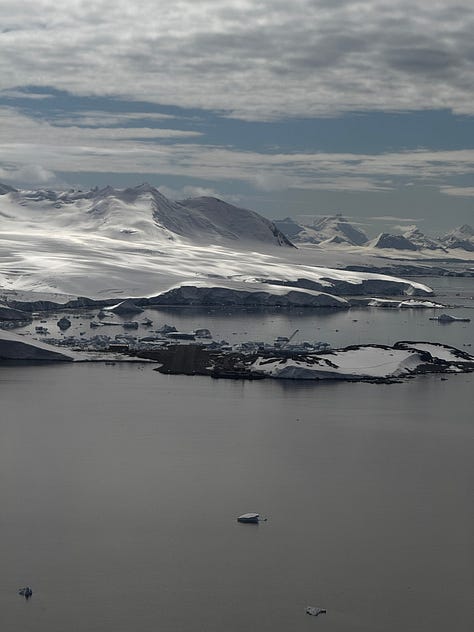
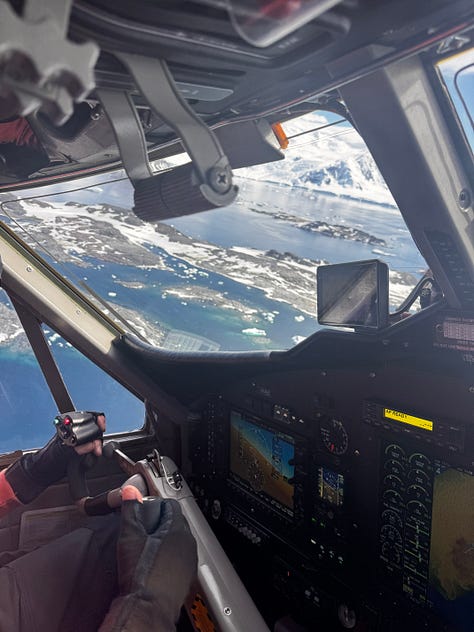
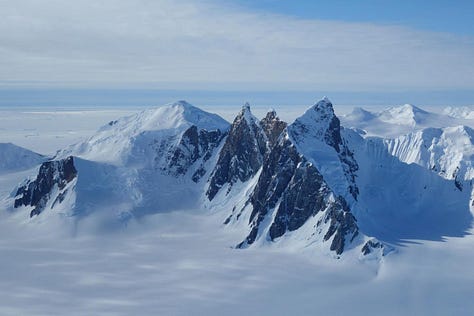

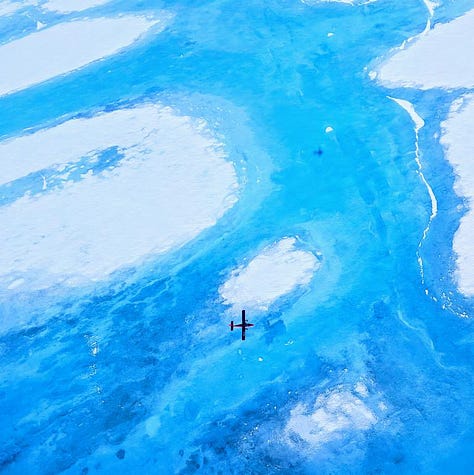
Seeing Antarctica from above is the real highlight of the trip. It’s a cliché, but as we climb out of Ryder Bay, I get to see the station and boating area from a completely new perspective. I also glimpse areas just outside our boating limits. The Mikkelson Islands, for instance, are normally out of reach, but even at 800 feet, their rocky masses are clearly visible. As we progress further toward the Peninsula, the water transforms from brash ice to continuous sheets. Eventually, the ice sheets merge into solid terrain. Mountains slowly loom larger, their summits seemingly level with our flight path. I’ve lucked out with a stunning day — my first flight had almost no clouds, and only a few appeared by the end of it.
Since we’re running ahead of schedule and the weather is favorable, the pilot decides to inspect an emergency depot. We lose altitude by weaving through a mountain range. On the other side, we search for fuel drums marked by a drum on a stick (for visibility in deep snow). In a landscape dominated by shades of black, blue, and white, spotting the drums proves surprisingly tricky. We locate them just as they appear on radar, and the pilot sets a course to approach. He brings us in — not to land, but to “trail skis.” The metal skis drag across the surface without committing to a full landing. This allows the pilot to check for crevasses. At the depot, the sea ice is a safe 300 meters deep, but pressure from adjacent glaciers creates ridging, which could render the depot unusable in an emergency. We bounce across the ice for a few hundred meters before taking off again. Turning 180º, we inspect our tracks. With no crevasses and the fuel drums upright, the depot is deemed serviceable.
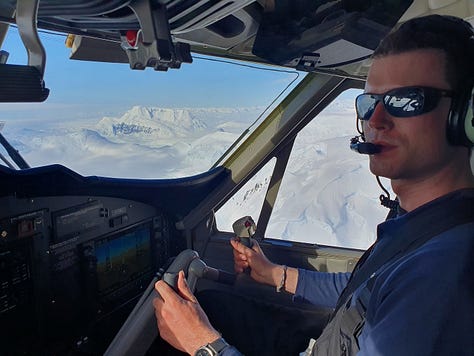


I actually get to do some flying myself. Over the course of the day, I fly for about three hours. It demands far more concentration than I’d expected, even just to keep the plane level. On my second flight, I finally crack it (the trick is to focus on the horizon, not the screens) and move on to a new skill: descending into Fossil Bluff. While I wasn’t allowed to land — a relief, considering the slushy runway caused us to slide both forwards and sideways simultaneously — I flew through some mountain ranges on the way home. The photos make the mountains look distant; in real life, they seemed incredibly close.
Our final run back to Rothera was delayed by the departure of Chilean Black Hawk helicopters. To pass the time, we flew to Carvajal, an abandoned Chilean base formerly operated by BAS. En route, the pilot demonstrated her ability to fly the plane while taking photos out of an open window. Through the low-lying cloud, we caught a glimpse of the base (we’d have flown lower if we had immersion suits, apparently). Seeing another slice of humanity, however brief, is always exciting — much like when a ship passes station.
Before long, we were cleared to land at Rothera. As the plane touched down for the fourth time, I realised with disappointment that the day was over. The memories and photos are incredible, and my brief time in the Antarctic field is a high of my time here. It’s possible I’ll get on another flight before winter, but with the planes scheduled to leave by mid-March, it’s sadly unlikely.
BAS have re-opened job applications
I know there are a few people who have subscribed who might be interested in this (or a similar) job. I’ve written an additional blog about the specifics of the role and BAS’ application process. It wasn’t emailed out as I thought it a bit niche, but here’s the link if you’re interested.
In other news…
Orca have re-appeared in Ryder Bay. They’ve now been seen four times in a week. One of these times ended a dive early, as BAS policy is not to dive when they’re in the area. That’s more than the total number of sightings in the entire summer season last year — we’re all hoping they stick around for a while. Seeing them is certainly one of the greatest privileges of living here. The BBC recently released a documentary on the pods that frequents our area. Well worth a watch, especially this clip.
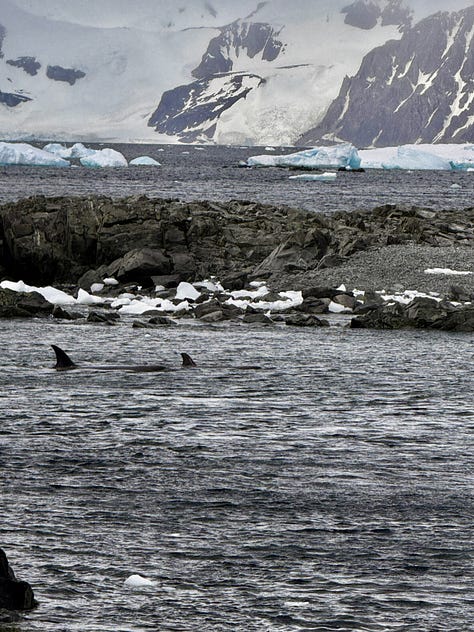
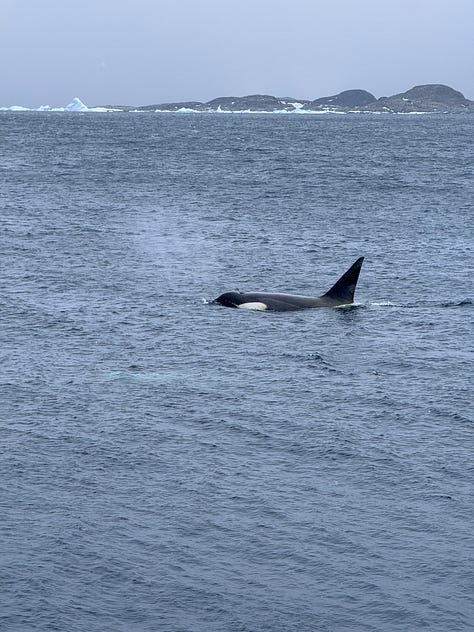
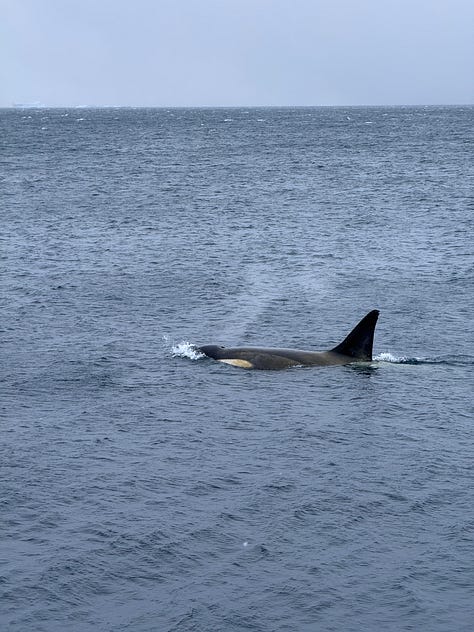




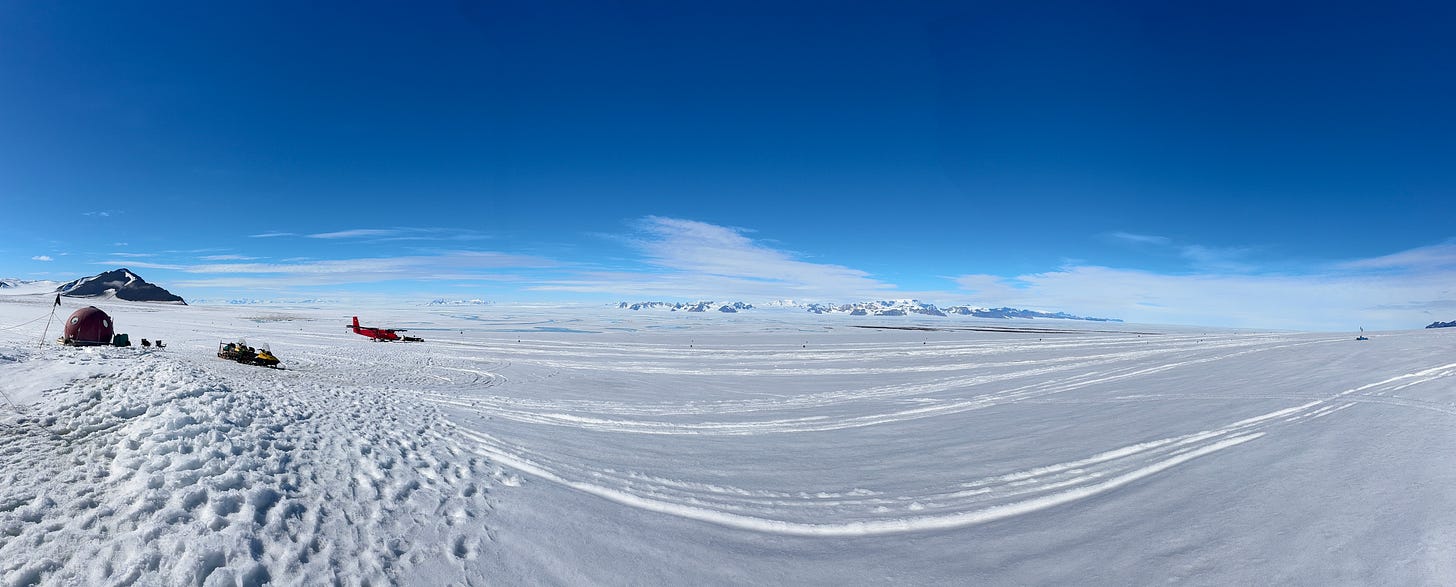
"Sitting up front is better" means you're a born pilot Ollie.🤛🏻😎